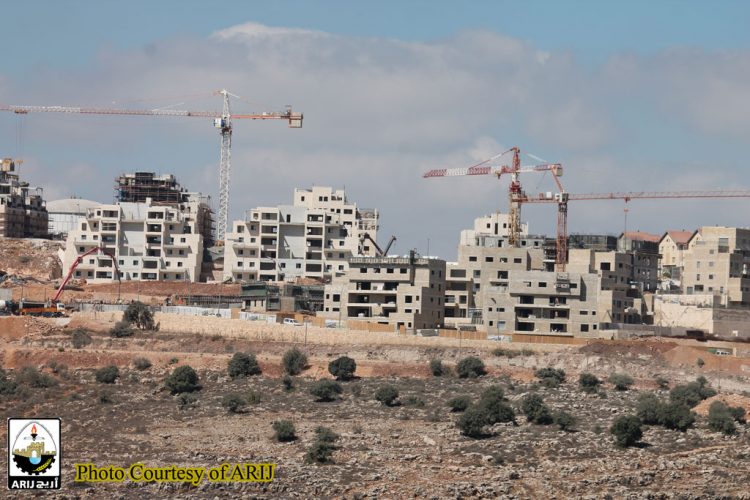- Introduction
Since the occupation of the Palestinian territory in 1967, the successive Israeli governments invested substantial resources in establishing and expanding the Illegal settlements in the occupied Palestinian Territory (oPt), both in terms of the land area they occupy by expropriating as much as possible of Palestinian land, and in terms of population. As a result of this policy, more than 800,000 Israeli settlers now live in 198 settlements, including tourist settlements, and 220 outposts distributed all over the West Bank, including East Jerusalem, all built in contradiction to the international law.
In 1991, the Israeli civil administration (ICA) operating in the occupied West Bank (oWB) designated master plans for Israeli settlements spread throughout the oWB, taking into consideration the allocation of additional land for the establishment of new settlements in the future and the expansion of the existing ones [1]. The master plans issued by the ICA in 1991 stood at 486.137 dunums of land (486.1 km², 8.6% of the total area of the WB), which is seven times the size of Israeli settlements area existed until the year 1991 which stood at 69,000 dunums of land (69 km2, 1.2% of the total area of the WB).
Following the signing of the Oslo Accords, I and II, in 1993 and 1995 respectively and the classification of the Palestinian lands into areas, “A”[2], “B” and “C”, the Israeli Occupation Authorities ignored the designation of Master plans for Palestinian communities in area “C” to meet their (Palestinians’) urban needs as it did with settlements, and did not take into account the status on the ground with regard to Palestinian constructions at these communities. Consequently, these communities stayed under the threat of demolition for lack of ability to issue building permits which avoid them demolition and displacement; this was due to the imposition of harsh measures by the Israeli Authorities on Palestinians acquiring building permits, and the long and complicated procedures that Palestinians have to go through to get a building license that enables them to build on their land or exploit it for any purpose whatsoever. Palestinians’ applications for building are most of the times rejected by the Israeli Authorities under the claim of “not meeting the necessary conditions needed for building in area “C”.”
In the year 2018, the Israeli government escalated its violations against the Palestinians and their properties, which negatively impacted the course of their lives. Despite the international efforts exerted in recent years to resolve the Palestinian-Israeli conflict and to achieve a comprehensive and just peace in the region, Israel continues to commit violations against the Palestinians and their properties and continues its settlement activities in the occupied Palestinian territory, namely the confiscation of Palestinian land, the expansion of settlements, the legalization of outposts and the demolition of homes and structures which in turn causes the displacement of hundreds of Palestinians from their place of living. As well as the violations committed against the Palestinian agricultural sector exemplified in the uprooting of trees, mostly Olive Trees which are a major source of income for hundreds of Palestinian families in the West Bank and the destruction of agricultural installations and equipment. In addition to the hundreds of demolition and stop work orders that targeted entire Palestinian communities under vague pretexts , in order to annex the lands on which these communities are located and to establish settlements instead. Following is a breakdown of the Israeli violations in the occupied West Bank during the year 2018.
To read full report, click here
Prepared by:
The Applied Research Institute – Jerusalem














